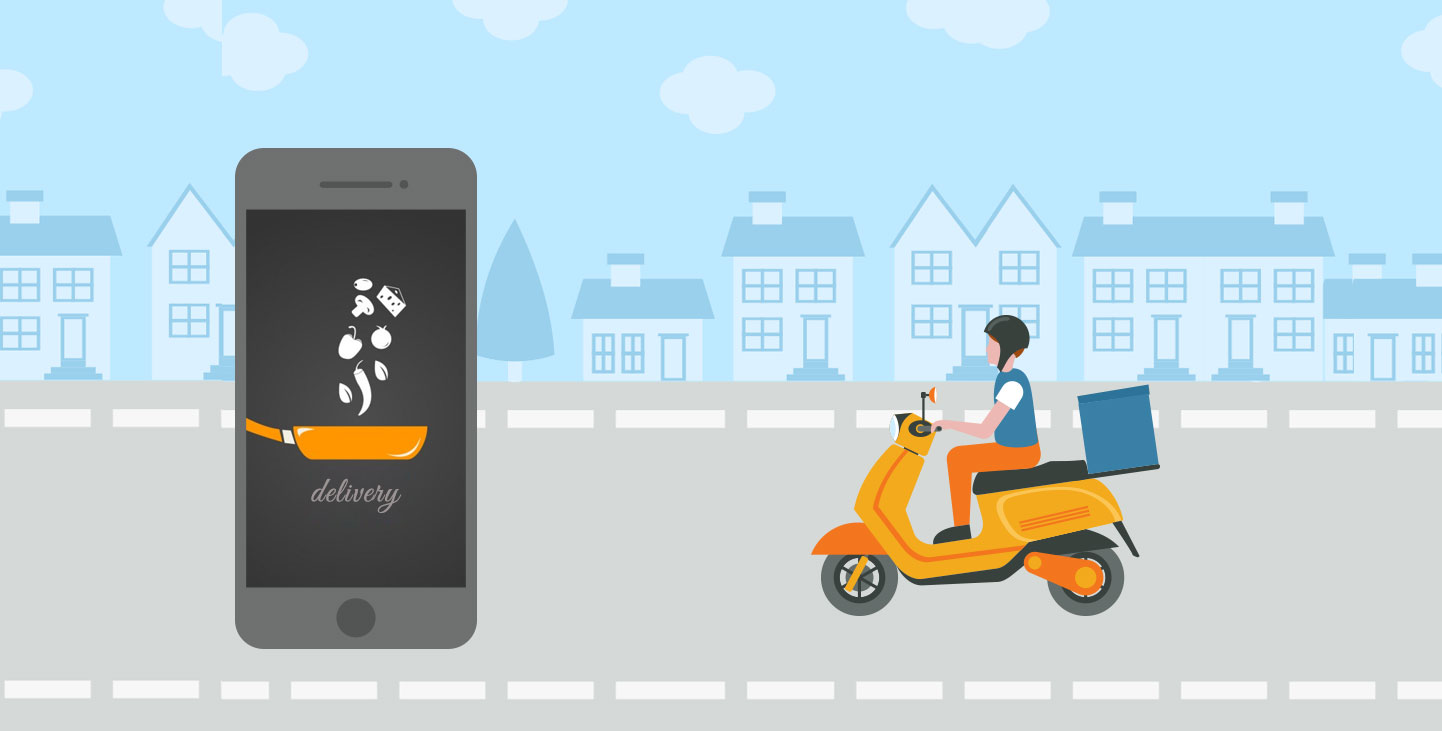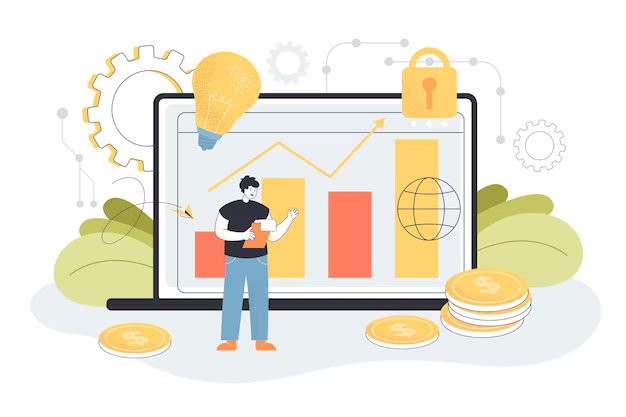Introduction
The food delivery market has seen explosive growth over the past decade, driven by the convenience and variety that food ordering apps offer. In the UK, the trend is no different, with consumers increasingly relying on these apps to enjoy their favorite meals from the comfort of their homes. This article delves into the intricacies of building a successful food ordering app development company in UK, from market analysis and essential features to technical specifications and marketing strategies.
Market Overview
Current Market Size and Growth Trends
The UK food delivery market is a bustling and rapidly expanding sector. According to recent statistics, the market size is expected to reach £8.9 billion by 2024, reflecting a compound annual growth rate (CAGR) of over 7%. This growth is driven by several factors, including the increasing penetration of smartphones, the rise of on-demand services, and changing consumer lifestyles.
Key Players in the UK Market
The UK food ordering market is dominated by major players like Deliveroo, Just Eat, and Uber Eats. Each of these platforms offers unique features and caters to different segments of the market. Deliveroo, for instance, focuses on premium restaurant partnerships, while Just Eat offers a wide range of cuisines from local takeaways to high-end eateries. Understanding the strengths and strategies of these competitors is crucial for new entrants.
Consumer Behavior and Preferences
UK consumers have a diverse range of preferences when it comes to food delivery. Convenience, speed, and variety are among the top priorities. Additionally, there is a growing demand for healthier options and eco-friendly packaging. Data analytics can provide valuable insights into these preferences, helping to tailor the app’s offerings to meet consumer needs effectively.
Planning Your App
Identifying Your Target Audience
Identifying and understanding your target audience is the first step in planning a successful food ordering app. This involves analyzing demographics, preferences, and spending habits. Whether you’re targeting busy professionals, families, or students, a clear understanding of your audience will guide the app’s design and functionality.
Market Research and Competitive Analysis
Conducting thorough market research and competitive analysis is essential. This includes studying existing apps, their features, user reviews, and market positioning. Identifying gaps in the market and opportunities for differentiation can provide a competitive edge. Tools like SWOT analysis (Strengths, Weaknesses, Opportunities, Threats) can be invaluable in this process.
Setting Goals and Objectives
Setting clear, achievable goals and objectives is crucial for guiding the development process. These might include user acquisition targets, revenue milestones, and feature rollout timelines. Establishing key performance indicators (KPIs) will help in tracking progress and making data-driven decisions.
Essential Features of a Food Ordering App
User-Friendly Interface
A user-friendly interface is paramount for the success of a food ordering app. It should offer easy navigation, a clean layout, and intuitive design elements that enhance the user experience. Simplifying the ordering process with features like quick reorder, favorites, and search filters can significantly improve user satisfaction.
Menu Management System
A robust menu management system is essential for restaurant partners to update their offerings, prices, and availability. This system should support high-quality images, detailed descriptions, and customization options for each dish, ensuring an appealing and informative presentation.
Real-Time Order Tracking
Real-time order tracking is a critical feature that provides transparency and builds trust with users. It allows customers to see the status of their order from preparation to delivery, reducing anxiety and enhancing the overall experience.
Payment Gateway Integration
Secure and convenient payment options are crucial for any food ordering app. Integrating multiple payment gateways, including credit/debit cards, digital wallets, and even cash on delivery, caters to a broader audience and improves conversion rates.
Push Notifications
Push notifications are a powerful tool for engaging users and driving repeat orders. These can be used to send order updates, promotions, personalized offers, and reminders, helping to keep the app top of mind for users.
Review and Rating System
A review and rating system allows customers to share their experiences and provides valuable feedback for continuous improvement. This feature not only builds credibility but also helps other users make informed choices.
Technical Specifications
Choosing the Right Platform
Deciding whether to develop the app for iOS, Android, or both is a key consideration. Each platform has its own set of requirements and user base characteristics. A cross-platform approach can maximize reach, but it’s important to ensure the app performs well on all devices.
Backend Infrastructure and Server Requirements
A reliable backend infrastructure is essential for handling user requests, managing data, and ensuring smooth operation. This includes robust server architecture, database management, and APIs for seamless integration with restaurant systems.
Data Security and User Privacy
Ensuring data security and user privacy is critical in building trust and compliance with regulations. Implementing encryption, secure payment processing, and strict data handling protocols protects user information and reduces the risk of breaches.
Scalability and Performance Optimization
As the user base grows, the app must be able to scale efficiently. This involves optimizing performance, reducing load times, and ensuring the app can handle high traffic volumes without compromising on user experience.
Design and User Experience
Importance of UX/UI in Food Ordering Apps
The user experience (UX) and user interface (UI) design play a pivotal role in the success of a food ordering app. A well-designed app not only attracts users but also keeps them engaged. Focus on simplicity, consistency, and responsiveness to enhance user satisfaction.
Designing Intuitive Navigation
Intuitive navigation is key to a seamless user experience. Ensure that users can easily find what they’re looking for, whether it’s browsing restaurants, placing an order, or checking their order history. Use clear icons, logical menus, and straightforward paths to guide users.
Visual Appeal and Branding
A visually appealing app with strong branding elements helps create a memorable user experience. Use high-quality images, a cohesive color scheme, and consistent typography to establish a strong brand identity that resonates with users.
Accessibility Considerations
Accessibility should be a priority to ensure the app is usable by everyone, including those with disabilities. Implement features like voice search, adjustable text sizes, and compatibility with screen readers to make the app more inclusive.
Development Process
Choosing Between In-House Development vs. Outsourcing
Deciding whether to develop the app in-house or outsource to a development agency is a crucial decision. In-house development offers more control but requires significant resources, while outsourcing can provide access to specialized skills and faster turnaround times.
Agile Development Methodology
Using an agile development methodology can enhance flexibility and responsiveness during the development process. Agile focuses on iterative progress, continuous feedback, and adaptive planning, which helps in delivering a high-quality product efficiently.
Testing and Quality Assurance
Comprehensive testing and quality assurance are vital to ensure the app functions correctly across different devices and scenarios. This includes functional testing, performance testing, security testing, and user acceptance testing.
Deployment and App Store Submission
Deploying the app and submitting it to app stores is the final step in the development process. Ensure that all guidelines and requirements are met for platforms like the Apple App Store and Google Play Store to avoid delays in approval.
Marketing and Launch Strategy
Pre-Launch Marketing Activities
Building anticipation and awareness before the launch is crucial. Utilize teasers, pre-registration campaigns, and early access offers to generate buzz and gather an initial user base.
Influencer Partnerships and Promotions
Partnering with influencers and running promotions can significantly boost visibility and credibility. Choose influencers whose audience aligns with your target market for maximum impact.
Social Media Marketing
Leverage social media platforms to reach a wider audience. Create engaging content, interact with followers, and use targeted ads to drive traffic and downloads.
SEO and ASO Strategies
Implement SEO (Search Engine Optimization) and ASO (App Store Optimization) strategies to improve visibility in search results and app stores. Use relevant keywords, compelling descriptions, and high-quality visuals to attract more users.
Launch Day Tactics
Plan a strategic launch day with coordinated activities across all marketing channels. Offer special discounts, engage with users on social media, and monitor performance to ensure a smooth launch.
Post-Launch Strategies
User Acquisition and Retention
Acquiring new users and retaining existing ones is crucial for long-term success. Use targeted marketing campaigns, loyalty programs, and personalized offers to keep users engaged and coming back.
Continuous App Updates and Improvements
Regular updates and improvements based on user feedback and market trends are essential. Keep the app fresh with new features, performance enhancements, and bug fixes to maintain user interest.
Handling Customer Feedback and Complaints
Actively listen to customer feedback and address complaints promptly. This not only improves user satisfaction but also helps in identifying areas for improvement and innovation.
Scaling Your Business
As the app gains traction, scaling the business becomes a priority. This includes expanding to new markets, increasing partnerships with restaurants, and optimizing operations to handle higher volumes.
Legal and Compliance Considerations
Data Protection Regulations (GDPR)
Complying with data protection regulations like the General Data Protection Regulation (GDPR) is critical. Ensure that user data is collected, processed, and stored in accordance with legal requirements to avoid penalties.
Food Safety and Hygiene Standards
Adhering to food safety and hygiene standards is essential for building trust with users. Ensure that restaurant partners comply with local regulations and maintain high standards of cleanliness and food handling.
Payment Processing Compliance
Payment processing must comply with financial regulations and standards. Use secure payment gateways and ensure PCI DSS (Payment Card Industry Data Security Standard) compliance to protect user payment information.
Terms of Service and Privacy Policy
Clearly defined terms of service and privacy policy are crucial for legal protection and transparency. These documents should outline user rights, data usage, and responsibilities clearly and concisely.
Financial Planning and Monetization
Initial Investment and Funding Options
Developing a food ordering app requires significant initial investment. Explore funding options such as venture capital, angel investors, and crowdfunding to secure the necessary capital.
Revenue Models
Choosing the right revenue model is key to profitability. Common models include commission on orders, subscription fees for premium services, and in-app advertising. Evaluate the pros and cons of each model to determine the best fit for your app.
Cost Management and Budgeting
Effective cost management and budgeting are crucial for sustainability. Track expenses meticulously, optimize resources, and allocate budgets wisely to ensure financial health.
Financial Projections and ROI
Developing detailed financial projections helps in setting realistic goals and measuring success. Calculate expected revenue, costs, and return on investment (ROI) to guide strategic planning and decision-making.
Case Studies
Success Stories of Popular UK Food Ordering Apps
Analyzing success stories of popular food ordering apps in the UK can provide valuable insights. For instance, Deliveroo’s focus on premium restaurants and efficient delivery logistics has contributed to its success.
Lessons Learned from Failed Apps
Understanding the reasons behind the failure of certain apps can help avoid common pitfalls. Issues such as poor user experience, inadequate market research, and lack of differentiation often lead to failure.
Innovative Features That Set Successful Apps Apart
Innovative features like AI-driven recommendations, contactless delivery options, and loyalty programs can set successful apps apart from the competition. Emphasize unique selling points to attract and retain users.
Challenges and Solutions
Managing High Demand During Peak Hours
Managing high demand during peak hours is a common challenge. Implementing features like order scheduling, dynamic pricing, and efficient delivery logistics can help manage demand and ensure timely deliveries.
Ensuring Food Quality and Timely Delivery
Ensuring food quality and timely delivery is critical for user satisfaction. Partner with reliable restaurants, use insulated packaging, and optimize delivery routes to maintain quality and speed.
Dealing with Competition
The food ordering market is highly competitive. Focus on unique value propositions, superior user experience, and effective marketing strategies to stand out from the competition.
Technical Issues and Troubleshooting
Technical issues can disrupt user experience and harm your app’s reputation. Implement robust monitoring, regular updates, and responsive customer support to quickly address any issues that arise.
Future Trends in Food Ordering Apps
Integration of AI and Machine Learning
AI and machine learning are transforming food ordering apps by offering personalized recommendations, predictive ordering, and automated customer support. Embracing these technologies can enhance user experience and operational efficiency.
Use of Blockchain Technology
Blockchain technology can improve transparency and security in food ordering apps. It can be used for secure payment processing, tracking food origins, and ensuring data integrity.
Personalization and Predictive Ordering
Personalization and predictive ordering enhance user experience by offering tailored recommendations and anticipating user needs. Use data analytics and machine learning to implement these features effectively.
Sustainability and Eco-Friendly Practices
Sustainability and eco-friendly practices are becoming increasingly important to consumers. Implementing features like reusable packaging, carbon offset options, and partnerships with eco-friendly restaurants can attract environmentally conscious users.
Conclusion
Building a successful food ordering app development company in UK involves careful planning, innovative features, and effective marketing strategies. By understanding the market, prioritizing user experience, and staying ahead of trends, you can create a competitive and profitable app. The future of food ordering apps is bright, with endless opportunities for growth and innovation.
FAQs
What are the essential features of a food ordering app?
Essential features include a user-friendly interface, menu management system, real-time order tracking, payment gateway integration, push notifications, and a review and rating system.
How much does it cost to develop a food ordering app?
The cost of developing a food ordering app varies based on factors like features, platform, development team, and location. On average, it can range from £20,000 to £100,000.
How can I market my food ordering app effectively?
Effective marketing strategies include pre-launch campaigns, influencer partnerships, social media marketing, SEO, and ASO. Engaging content and targeted promotions are also crucial.
What are the legal requirements for launching a food ordering app in the UK?
Legal requirements include compliance with data protection regulations (GDPR), food safety and hygiene standards, payment processing compliance, and clear terms of service and privacy policy.
What are the latest trends in food ordering apps?
Latest trends include the integration of AI and machine learning, use of blockchain technology, personalization and predictive ordering, and sustainability and eco-friendly practices.




Hey There. I discovered your blog the usage of msn. That
is a very smartly written article. I’ll make sure to bookmark it and come back to
read extra of your useful info. Thank you for the post.
I’ll certainly comeback.
Heya i’m for the first time here. I found this board and I find It truly useful & it helped me out a lot.
I hope to give something back and aid others like you
helped me.